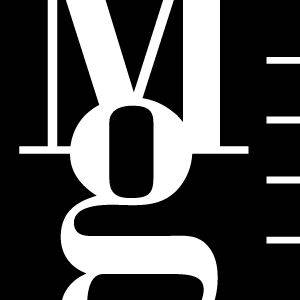Expozice „Brno — moravský Manchester― s příznačným podtitulem „250 let metropole textilního průmyslu ― představí fenomén Brna, kterému se přezdívalo pro jeho vysoce kvalitní vlnařskou produkci moravský Manchester. Ukáže urbanistické proměny související s budováním textilního průmyslu v několika lokalitách (Cejl, Tkalcovská, Dornych, Trnitá, Křenová, Lidická ad.), nejdůležitější továrny a jejich majitele (Offermann, Redlich, Löw-Beer, Stiassni ad.). Expozice seznámí také s historií podniků Vlněna a Mosilana, které vznikly znárodněním a spojením některých bývalých soukromých továren původně německých nebo židovských majitelů. V kontextu brněnského textilního průmyslu představí výstava také Moravské průmyslové muzeum (dnešní Uměleckoprůmyslové muzeum, jednu z pěti budov Moravské galerie v Brně). To vzniklo jako iniciativa některých předních osobností z řad textilních podnikatelů a jejich snahy o podporu místních živnostníků a podnikatelů skrze aktivity muzea a jeho akviziční činnost.

„Moravská galerie chce vyzdvihnout funkci Uměleckoprůmyslového muzea v Brně a oživit fenomén, který může být novým impulzem pro budování moderního brandu Brna. Již dříve se v Brně průmyslu dařilo a právě Uměleckoprůmyslové muzeum v Brně je svědkem velkého úspěchu podnikání. Toto muzeum patří dokonce mezi jedno z nejstarších na celém světě. Bohatí průmyslníci ho založili v roce 1873. Byli to ti stejní průmyslníci, kteří postavili textilní továrny dnes známé jako Vlněna nebo Mosilana a jejichž soukromé vily navrhovali slavní architekti počátku 20. století,"― uvádí ředitel Moravské galerie v Brně Jan Press.
Téma brněnského textilního průmyslu není ale jen historickou záležitostí. Jeho odkaz je stále aktuální a známý i na mezinárodním poli:
„Velmi zajímavým příspěvkem do současné módy je technika netkané textilie rozvíjená ve Vlněně, původně zamýšlená jako závěsná dekorace nebo tapeta. Jde o art-protis, dodnes vnímaný mnohými jako typický artefakt doby socialismu. Experimenty s touto technikou v posledním desetiletí přesto dokazují, že má stále svůj potenciál a může oslovit nejmladší generaci designérů. Na výstavě představíme jednak výsledky dlouholeté práce s art-protisem Světlany Kulíškové-Ruggiero, která v milánském Studiu Dyloan použila tuto techniku jako oděvní látku. Zájem o ni projevila řada prestižních návrhářů (Jil Sander, Marc Jakobs, Prada). Calvin Klein použil její látku art-protis v kolekci podzim–zima 2011/2012 a navrhl z ní minimalistické šaty. Na tyto zkušenosti navázala Karolína Juříková z ateliéru Liběny Rochové na UMPRUM, která na letošním Mercedes Benz Prague Fashion Weekendu a Designbloku prezentovala celou kolekci oděvů z art-protisu pro sezónu jaro/léto 2015. Část z ní rovněž představíme na výstavě ,Brno — moravský Manchester‘,― objasňuje kurátorka Andrea Březinová.
The exhibition “Brno — Moravian Manchester” with its subtitle “250 years of the capital of the textile industry” introduces the phenomenon of Brno, which was nicknamed the Manchester of Moravia because of its high-quality wool production. It shows the urbanistic changes connected with the construction of the textile industry in several localities (Cejl, Tkalcovská, Dornych, Trnitá, Křenová, Lidická etc.), the most important factories and their owners (Offermann, Redlich, Löw-Beer, Stiassni etc.). The exhibition also presents the history of the Vlněna and Mosilana companies, which came into being through the nationalization and merger of several private factories which had originally had German or Jewish owners. In the context of Brno’s textile industry the exhibition also introduces the Moravian Industrial Museum (today’s Museum of Applied Arts, one of the five buildings of the Moravian Gallery in Brno). It came into being through an initiative by some prominent individuals from the ranks of textile industrialists and their attempt to support local tradesmen and entrepreneurs through the activities and acquisitions of the museum.
“The Moravian Gallery wishes to highlight the role of the Museum of Applied Arts in Brno and revive a phenomenon which could become the trigger for the creation of a modern brand of Brno.Industry thrived in Brno in earlier times and the Museum of Applied Arts in Brno is itself a witness to the great success of business. This museum is actually one of the oldest in the whole world. It was founded by rich industrialists in 1873. These were the same industrialists who erected the textile factories which are known today as Vlněna and Mosilana and whose private villas were designed by famous architects in the early 20th century,” states the director of the Moravian Gallery in Brno, Jan Press.
However, the Brno textile industry is not just a historical matter. Its legacy is still with us today and is well known on the international stage:
“A very interesting contribution to contemporary fashion is the technique of non-woven textile developed at Vlněna, originally intended as a decorative hanging or wall covering. This is Art Protis, until recently perceived by many as a typical artefact of the time of socialism. However, experiments with this technique in the last decade demonstrate that it still has potential and can appeal to the younger generation of designers. At the exhibition we present the results of long-term work with Art Protis by Světlana Kulíšková-Ruggiero, who used this technique as clothing fabric at Studio Dyloan in Milan. Interest has been expressed in it by a number of prestigious designers (Jil Sander, Marc Jacobs, Prada). Calvin Klein used her Art Protis fabric in his autumn-winter 2011/2012 collection and designed minimalistic clothes from it. Karolína Juříková from Liběna Rochová’s studio at UMPRUM followed up on these experiences, showing an entire collection of clothing made from Art Protis for the spring/summer 2015 season at this year’s Mercedes Benz Prague Fashion Weekend and Designblok. We will also present part of it at the exhibition ‘Brno — Moravian Manchester”, explains the curator, Andrea Březinová.

